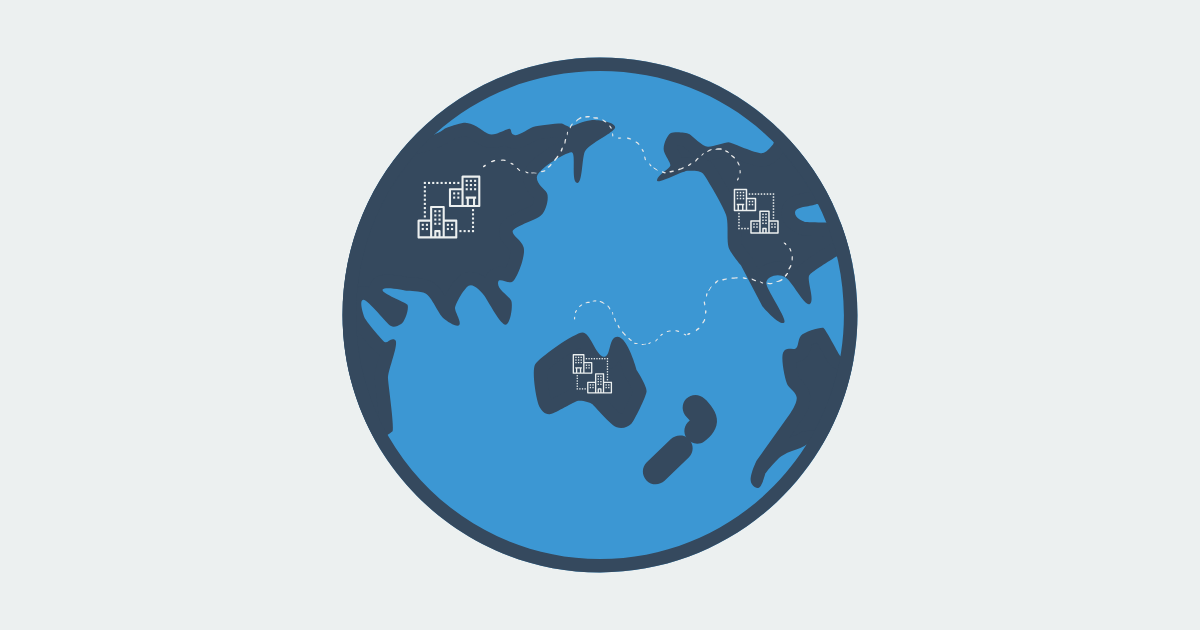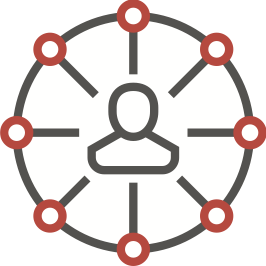With more and more companies leveraging partner marketing, it’s never been more important for marketers to learn how to build a channel partner program. In fact, in today’s multi-channel, always-on, digital landscape, it has become nearly impossible to generate awareness, trust, and acquire customers in one certain way, at one specific place without enlisting in the help of partners to increase success. More so, 63.5% of companies say partners contribute to their annual revenue1. Prioritizing partner enablement can put your business in the best position to succeed.
Partners can be effective in adding to your total value proposition, better addressing your customer’s needs, further differentiating your product from the competition, and helping acquire more customers, faster. They can even help fill holes in your offerings or delivery, all while extending the strength of your brand to potential customers. Intelligently managing partners also helps marketers understand what can be attributed to each marketing factor and channel to explain the influence on sales. Most importantly, partners should help deliver one shared experience to your end consumer.
Get Started: How to Build a Channel Partner Program
Before we dive right in, let’s make a few assumptions. First, your buyers are researching your brand before actually engaging with you. Roughly 80% of the B2B buyer’s journey is complete before a buyer reaches out to sales2. Which is why it’s crucial to build relationships with customers using the help of partners.
Second, let’s assume we’re working off the same definition of partner marketing.
What is partner marketing?
Partner marketing leverages the synchronicities of two companies – each with its own brand equity, core expertise, unique value proposition, and its own distribution strength – to create strategic alliances to gain market share both companies otherwise may have a long and arduous process of acquiring.
 For example, a US-based software company is looking to expand into EMEA. Instead of relocating employees, hiring and providing extensive training on culture and processes and GTM strategy, as well as footing the bill for the expensive overhead that comes with more offices, the company decides to develop strategic partnerships in EMEA. These partners are experts in the region, have their own networks and existing customer bases of the target profile, and can be quickly brought up to speed on the product offerings. This will decrease the timeline and cost to acquire and service customers in EMEA. Additionally, this partnership provides greater marketing exposure which, ultimately, drives new customers.
For example, a US-based software company is looking to expand into EMEA. Instead of relocating employees, hiring and providing extensive training on culture and processes and GTM strategy, as well as footing the bill for the expensive overhead that comes with more offices, the company decides to develop strategic partnerships in EMEA. These partners are experts in the region, have their own networks and existing customer bases of the target profile, and can be quickly brought up to speed on the product offerings. This will decrease the timeline and cost to acquire and service customers in EMEA. Additionally, this partnership provides greater marketing exposure which, ultimately, drives new customers.
In this instance, the company is able to dramatically decrease the speed to market while increasing the quantity and quality of feedback from their target market, via local, experienced partners.
Another assumption we can make is that you are part of a B2B organization and are looking for ways to create strong, relevant, and effective partner programs.
So, with these assumptions in place, where do marketers start when it comes to developing a partner marketing plan?
Step 1: Grow Your Audience: Increasing the number of partners in your program
Similar to running a referral program, partner marketing is in part a numbers game. Instead of limiting your program to a small niche group, you’re likely to see better results with expanded outreach. When companies open up their programs to different types of partners, activity spikes and the top of the funnel begins to expand.
Here are 3 ways to cast a wider net when it comes to reaching more potential partners:
1. Promote Your Program
Don’t rely on partners to come to you or hope that the right partners will find your program. Announce your program launch through dedicated emails to those already in your network, such as industry associations, to start seeing results quickly. And keep the momentum rolling by sharing a media statement on LinkedIn or distributing a press release for every new partnership developed. This exposure is good for both sides and shares a unified front to the public.
2. Add a Program Overview Landing Page
Provide partners with a comprehensive overview of the program by having a dedicated page to educate them. This also makes it easy to share URLs and point back to this page whenever promoting your partner program.
3. Utilize a Self-Serve Registration Page
Having a registration page allows potential partners to “opt-in” and for you to collect additional information, such as their company profile and other useful details. Once they submit an application via the registration form, you can choose to immediately deliver access to your program, or do additional manual screening. Either way, applications or registration pages substantially reduce the front-end administrative time with prospective partners that may not be a good fit. Don’t forget, for relationships you’ve established with existing partners, include them into your program to make participation turnkey.
While quality usually trumps quantity, it’s important to choose the right partners that make sense for your business and to the end consumer. There should be a synergy and balance in the relationship between two different organizations with unique, but complimentary offerings.
Typically, when companies have the right messaging and relevant incentives for partners that are adding to the top of the funnel, passing along leads, and even helping to close deals – a ripple effect is created.
In order for partner marketing to work, it must be beneficial for all parties.
 Step 2: Focus on Attribution: Track all of the leads your partners are driving, as well as pipeline attribution and new deals
Step 2: Focus on Attribution: Track all of the leads your partners are driving, as well as pipeline attribution and new deals
Most marketers today are interested in – okay, obsessed with – metrics, data, and analytics. And conversion tracking is just as important to partners. By giving partners visibility into your sales process, partners are empowered to see the prospect go through the entire lifecycle, not just hand over a lead.
Top of funnel: It’s critical that you recognize your partner’s efforts when a lead they generated converts on your website or is submitted by the partner. If your partner program leverages automation, you can easily notify partners via triggered email notifications.
Bottom of funnel: When a partner’s lead ultimately becomes a paying customer, brands need to share the details with the partner. Often times, the sales cycle can be long, so reaching out to acknowledge the attribution is a great opportunity to validate their efforts and engage with them to continue their promotion of your products and services.
Pay Day! Whether you are paying a one-time fee, recurring commissions, or have a revenue-share percentage agreement, partners want clear communication on when they’re being paid and how much to expect. Again, automated email notifications tend to work best.
 Step 3: Understand What Matters Most to Your Partners: Ensure you are offering the right incentive at the right time
Step 3: Understand What Matters Most to Your Partners: Ensure you are offering the right incentive at the right time
While there’s no one-size-fits-all approach to developing an incentive structure, it’s important to build a program that best suits your company and partners. Determining the mechanics of your commissions or revenue share is the first step in developing an effective program that will generate the most leads for your business. The most successful incentive structures are easy to explain, implement, and payout.
Here are 3 types of incentive types to consider:
- Utilize a Revenue Share: Most partner programs offer a commission that is a percentage of the total purchase. You can easily fulfill cash payouts all over the world via PayPal or Payment Rails, and these are best-in-class options. Tip: If you’re a SaaS company, recurring commissions are a popular way to ensure alignment with partners and their referrals.
- Offer a Dual Incentive: Rewarding both the partner and the referee, shared end customer, can provide a substantial lift. And, helps the partner further establish a relationship with their referral prospects.
- Tiered Model: Partner leads close a much higher rate than other channels, but not every lead immediately turns into new business. These valuable leads are likely worth some small incentive – think $20-$100 – as a way to recognize and encourage more partner engagement and activity. Then, when a partner lead closes and becomes a paying customer, you should provide them a larger commission.
 Having a partner program in place that can reach new audiences, increase your pipeline, and motivate partners to continue referring new business is the cornerstone of every growing B2B organization’s marketing plan.
Having a partner program in place that can reach new audiences, increase your pipeline, and motivate partners to continue referring new business is the cornerstone of every growing B2B organization’s marketing plan.
Key Components of a Successful Channel Partner Program
Building a channel partner program requires careful planning and strategic alignment with your business goals. One critical component is developing a compelling value proposition that clearly communicates how the program will benefit potential partners. By highlighting opportunities such as revenue sharing, access to new markets, and ongoing support, you can attract high-quality partners who are motivated to contribute to mutual success. Additionally, establishing a robust incentive structure tailored to different partner tiers and performance levels is essential for driving engagement and ensuring that partners remain committed to achieving shared objectives.
Leveraging Automation and Analytics for Program Growth
To scale a channel partner program effectively, automation and data-driven insights are indispensable. Automating key processes, such as lead tracking, deal registration, and performance monitoring, frees up your team to focus on high-value activities like relationship building and strategic planning. Moreover, integrating advanced analytics tools allows you to track partner performance in real-time, identify trends, and make informed decisions that enhance program efficiency. By continuously refining your approach based on data insights, you can foster a more responsive and agile partner ecosystem that drives sustained growth.
Unlock growth with referrals—request your free Ambassador demo today and see the impact firsthand!
Learn more about building a channel partner program in our Definitive Guide, available below.
